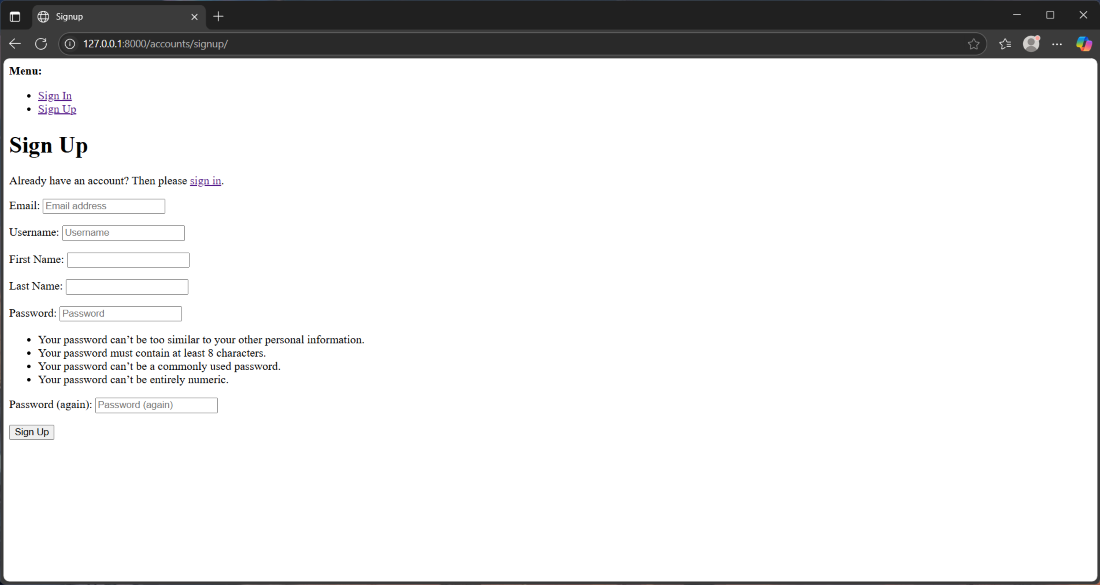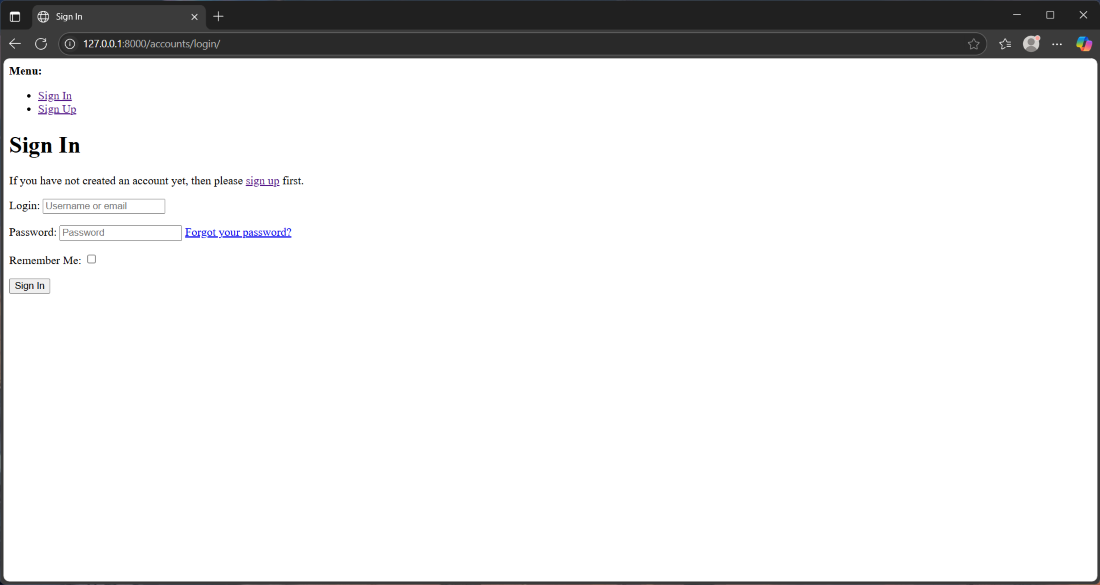Extending and customizing djangoallauth in Python (original) (raw)
Extending and customizing django-allauth in Python
Last Updated : 24 May, 2025
**Django-allauth is a powerful Django package that simplifies **user authentication, **registration, **account management, and **integration with social platforms like **Google, **Facebook, etc. It builds on Django’s built-in authentication system, providing a full suite of ready-to-use views and forms.
**Prerequisite: Django-allauth setup and Configuration
Features of Django allauth:
- Allow users to sign up and log in using their email or username.
- Manage **login/logout and email verification workflows.
- Add custom fields or logic to the registration process.
- Enable social logins with minimal configuration.
In this tutorial, we will set up a basic Django application that demonstrates how to use django-allauth for user authentication- covering login, logout, and signup functionality without using any custom templates.
Step 1: Create a Django Project and App
Create a new project and app, to learn about how to create and set it up, refer to:
Suppose we created a project named **form and an app inside it, named **formapp.
Register formapp in **settings.py so Django knows to include it in the project:
Python `
INSTALLED_APPS = [ ...
'formapp', # formapp registered here]
`
Step 2: Install and Configure django-allauth
We install **django-allauth to extend Django's authentication system with features like **registration, **login, **logout, **email verification, and **social **login. It provides **prebuilt views and **forms so we don't have to implement them manually.
Install it using the command:
pip install django-allauth
Add required apps to INSTALLED_APPS
We now add required apps that power the core features of **django-allauth, including site management and social accounts.
Python `
INSTALLED_APPS = [ ... 'django.contrib.sites', # Required by allauth to manage sites 'allauth', # Core allauth functionality 'allauth.account', # User account management (signup/login) 'allauth.socialaccount', # For social login (optional) 'formapp', # Your app ]
`
Configure SITE_ID
This is needed for Django’s sites framework. Allauth uses this to differentiate between multiple domains. Since we’re using one site, we set:
SITE_ID = 1
Set up authentication backends
We need to tell Django to use both its default backend and the one provided by **allauth, add these codes in **settings.py:
Python `
AUTHENTICATION_BACKENDS = ( "django.contrib.auth.backends.ModelBackend", # Default auth "allauth.account.auth_backends.AuthenticationBackend", # Required by allauth )
`
Define redirect URLs after login/logout
These control where users are redirected after they **log **in or **log out:
Python `
LOGIN_REDIRECT_URL = '/' # Redirect after successful login ACCOUNT_LOGOUT_REDIRECT_URL = '/accounts/login/' # Redirect after logout
`
Customize account behavior
Here we define what fields are required and how authentication should behave:
Python `
ACCOUNT_EMAIL_REQUIRED = True # Email must be provided ACCOUNT_USERNAME_REQUIRED = True # Username is also required ACCOUNT_AUTHENTICATION_METHOD = 'username_email' # Users can log in using username or email ACCOUNT_EMAIL_VERIFICATION = 'none' # Skip email verification for simplicity
`
Ensure required middleware and context processors are present
**allauth needs access to the request object in templates. Add the following to **TEMPLATES:
'django.template.context_processors.request',
And include the **AccountMiddleware:
'allauth.account.middleware.AccountMiddleware',
Step 3: Create a Custom Signup Form
Sometimes you want to collect additional user data or change signup behavior. We do this by creating a form that extends **SignupForm.
Create the following inside **formapp/forms.py (make sure it is inside the app folder, not the project folder):
Python `
from allauth.account.forms import SignupForm from django import forms
class CustomSignupForm(SignupForm): first_name = forms.CharField(max_length=30, label='First Name') last_name = forms.CharField(max_length=30, label='Last Name')
def save(self, request):
user = super().save(request)
user.first_name = self.cleaned_data['first_name']
user.last_name = self.cleaned_data['last_name']
user.save()
return user`
Then, tell Django to use this form:
Python `
settings.py
ACCOUNT_FORMS = { 'signup': 'formapp.forms.CustomSignupForm', }
`
This replaces the default signup form with your custom one.
Step 4: Set Up URLs
django-allauth provides ready-made views like ****/login/, /signup/, /logout/**. To enable them, include its URLs in the project’s **urls.py:
Python `
form/urls.py
from django.contrib import admin from django.urls import path, include
urlpatterns = [ path('admin/', admin.site.urls), path('accounts/', include('allauth.urls')), ]
`
Now visiting ****/accounts/login/** or /accounts/signup/ will render the custom signup form (if defined), or the default form otherwise.
Step 5: Run the Server and Test
Migrate the database to create necessary tables:
python manage.py makemigrations
python manage.py migrate
Open your browser and visit:
- To **register a new user: **http://127.0.0.1:8000/accounts/signup/
- To **log in: http://127.0.0.1:8000/accounts/login/
- To **log out: **http://127.0.0.1:8000/accounts/logout/
**Outputs:

Snapshot of the sign-up page

Snapshot of the sign-in page
**Read Next Article: **Django Sign Up and login with confirmation Email